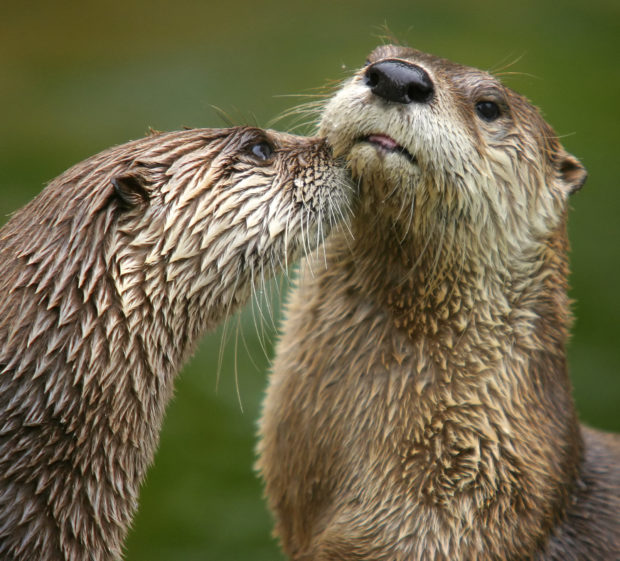We have much more to do and your continued support is needed now more than ever.
Healthy Headwaters for People and Wildlife

Strategic partnership aims at healthy forests, healthy water, healthy people—and water for wildlife

The whole is greater than the sum of its parts. Or, as National Wildlife Federation’s Chief Program Officer often says, “Our brand is collaboration.” Working together for greater results is a driving force in our work—and inspires an exciting new partnership with the Healthy Headwaters Alliance.
Together, we’re focused on building resilience back into forests in the American West through watershed restoration and source water protection, as well as protecting and enhancing the riparian corridors that provide “ribbons of life” in the arid West.
In the western United States, riparian areas comprise less than 1 percent of the land area, but they are among the most productive and valuable parts of the landscape—providing essential habitat for over 80 percent of wildlife species, including corridors that allow animals to move between areas necessary for their survival.

The Healthy Headwaters Alliance is a powerful network of water utility executives, public resource managers, scientists, community and water justice leaders, and conservation advocates. Building on a shared commitment to equitable, science-based actions, this visionary new partnership will foster a strategic expansion in efforts to protect water in the West for people and wildlife.
Our collaboration is gaining immediate traction with Laura Briefer, director of Salt Lake City Public Utilities, and Healthy Headwaters Alliance leadership team member.
“Working together, we can accelerate our efforts toward healthy forests, healthy water, healthy people,” Laura said. “We’ll be moving immediately toward our next phase, which will take a broader collaborative approach with the larger National Wildlife Federation network to systematically incorporate wildlife habitat integrity, public health, and water equity into the goal of healthy headwaters protection.”
Building on experience, charting a new course
What does this partnership bring to the National Wildlife Federation’s Western Water Program? An established track record and a powerful team of water leaders ready to develop and share solutions for water challenges across the region. For the last 10 years, the Healthy Headwaters Alliance has been incubated by Carpe Diem West, a nonprofit focused on water and justice.
By moving to the National Wildlife Federation, Healthy Headwaters gains the ability to scale up and expand support for innovative regional initiatives that address compelling issues affecting western forest and water health.
Urban and rural communities alike depend on water flowing from our National Forests. The work of Healthy Headwaters leaders ensures healthier and more secure water supplies. Restoration work on our national forest headwaters provides jobs and skills training in rural communities. Mitigation of catastrophic wildfires results in less smoke, debris flows, and fewer displaced residents.
Bold steps, an exciting new direction

Photo: Skip Kowalski
As the Federation builds out our Western Water Program, we are also excited to announce the launch of the Healthy Headwaters-aligned Upper Rio Grande Riparian Corridors Initiative.
This new regional project will engage diverse local partners to develop an action plan and build momentum for protecting and restoring high-priority riparian systems to promote habitat connectivity and wildlife corridors.
The dynamic program design builds on our existing Connected Corridors initiative and adds new components to address the critical riparian corridors in this region using a two-prong approach. First, by identifying key strongholds and pinch points in the region’s riparian network, we will identify priorities for where conservation efforts could enhance the functionality of the network. At the same time, we’ll chart a course for targeted and strategic partnerships and actions that will address the question of how to most effectively enhance protection and restoration of that network.
With this program expansion, the National Wildlife Federation is better able to achieve a major strategic objective of Water for Wildlife—connecting public land and water management, building climate resilience; improving stream flows, enhancing ecosystem restoration, and connecting vital riparian corridors.
These initiatives will complement and bolster the Federation’s existing advocacy for beaver restoration in public lands headwaters and salmon recovery in the Columbia River Basin, and supporting Colorado River Tribes to advance their vision for the river. Thanks to the Federation’s unique structure, ranging from grassroots advocates to national policy experts, this work includes local, regional, and national initiatives.
We are also excited to welcome a new member to the team to help accomplish these ambitious goals: Alex Puglisi has begun work in June as the Federation’s Western Water Project Manager, from his Santa Fe, New Mexico base. Alex brings experience working with tribal, municipal, and state agencies focused on water and environmental restoration.
Help support our work for the West’s waters and the wildlife that depend on them.





















